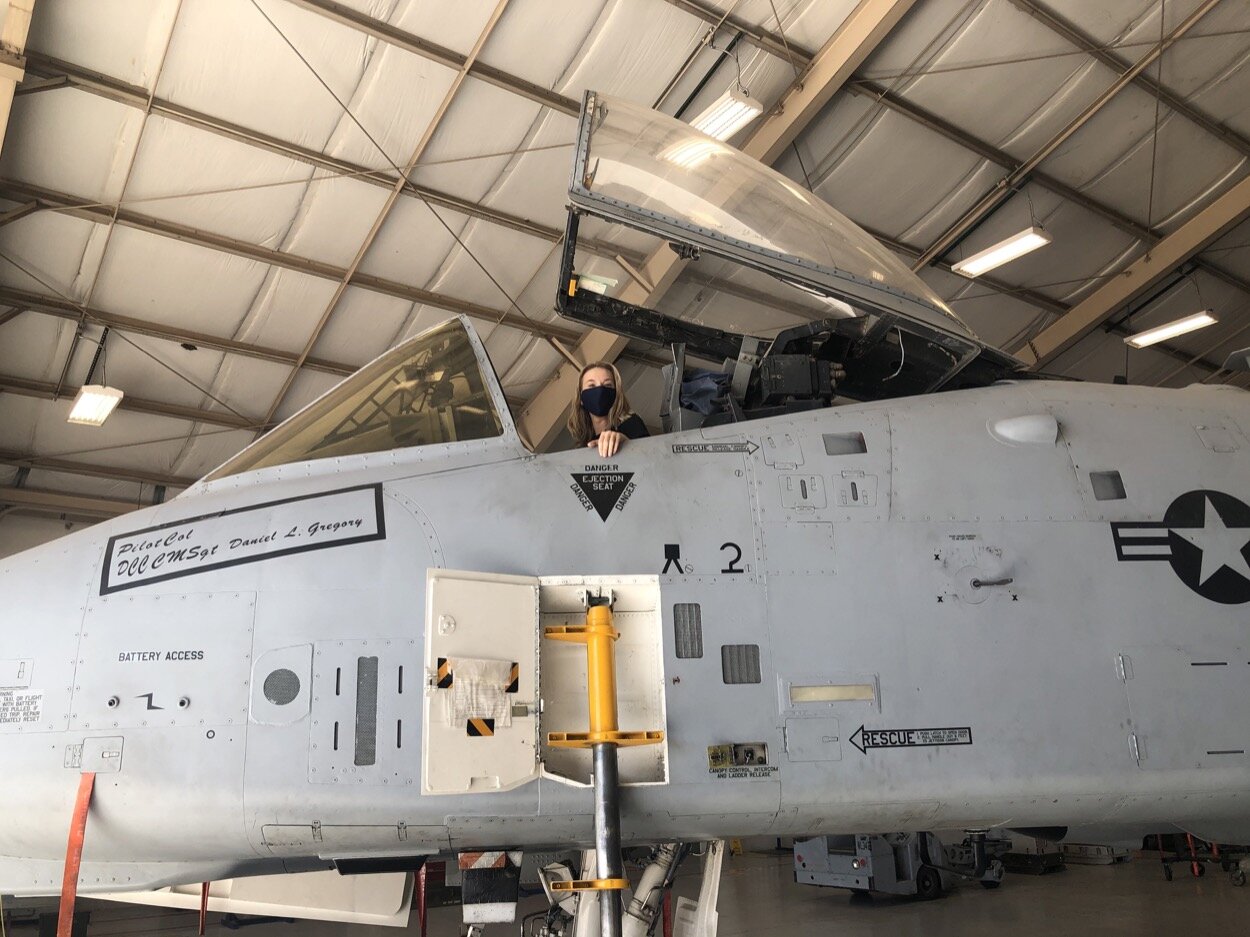No Sim, No Train
No Sim, No Train
Arizona State University
Overcoming Training Shortages with Virtual Reality (VR) Simulations
The Team
Ksenia Kerentseva
• MS in Innovation and Venture Development from Arizona State University
• BS in Aeronautical Management Technology from Arizona State University
Vipin Verma
• Former Tech Lead at Bluesapling
• Former Software Engineer at Wize Commerce
• PhD Candidate in Human Systems Engineering at the Ira A. Fulton Schools of Engineering at Arizona State University
• MS in Computer and Information Systems Security & Information Assurance from Stratford University
• B.Tech in Production & Industrial Engineering from the Indian Institute of Technology, Roorkee
James Cook
• Technology Facilitator at the Centers for Adaptive Warfighting
• 2021 X-Force Fellow
• Former Mechanical Engineering Intern at MD Helicopters, Inc.
• BS in Mechanical Engineering Systems with a concentration in Homeland Security from the University of Arizona
Problem Sponsor
355th Maintenance Group - Air Combat Command
Original Problem Statement
Aircraft maintainers from the 355th Maintenance Group need an accessible training program in order to improve their capability to complete essential core tasks and certify their experience.
Beneficiary Discovery Interviews
21
The Innovation
The 355th Maintenance Group at Davis-Monthan Air Force Base in Tucson, AZ works to ensure deployment readiness of over 1,900 personnel by training mission-ready pilots and maintenance personnel. With a shortage of sufficiently trained maintenance crew, H4D Team “No Sim, No Train” from Arizona State University was tasked with increasing training efficiency to ensure safe and efficient missions for soldiers.
Through 21 interviews and two visits to Davis-Monthan Air Force Base, the team realized the key challenge facing the 355th Maintenance Group was the maintenance team shared training equipment, including the flight simulators and the physical aircrafts, with pilots. The priority for training equipment typically went to pilots and maintenance personnel frequently had their training rescheduled or delayed. With these disruptions, some maintenance personnel were unable to complete the training at all.
The team set out to not only improve the availability of training equipment for the 355th Maintenance Group, but also worked to improve overall preparedness. This improvement would reduce the unit’s cost to repair planes and safety for maintenance personnel. With the goals of increasing access and reducing errors, the team decided the best solution would be to develop a virtual reality (VR) solution that would allow maintenance personnel to train on their own equipment with their own software, to decrease conflicts with pilots.
At first, the team considered building an entirely new VR software. However, upon further investigation, the team realized this solution would prove too costly and time consuming for the 355th Maintenance Group, who were looking to quickly implement the solution. Thus, the team decided to work with existing software and modify it to fit the needs of maintenance personnel.
Despite public health conditions, the team had the opportunity to visit Davis-Monthan Air Force Base to experience the existing pilot training simulators. The team stated that having the opportunity to test the equipment themselves debunked several of their assumptions and allowed them to better understand the experience of those using the equipment.
After experiencing the existing system themselves, the team set off to work with partner organizations to develop software that specifically met the needs of maintenance personnel. The team utilized the existing training procedures to construct various scenarios for trainees. You can view the team’s MVP in action here. Upon presenting the innovation to their problem sponsor, they received very positive feedback. One 355th Maintenance Group trainer expressed how thrilled she was to have VR training software instead of needing to use live ammunition for both safety and cost reasons.
Team No Sim, No Train plans to continue to pursue this venture beyond the semester and plans to incorporate as “VTRAIN”. The team was accepted into the NSIN Vector Program to continue to build out their solution. The team hopes to continue to develop the appropriate training software for the 355th Maintenance Group and hopes to build and scale similar VR solutions across the Department of Defense.
No Sim, No Train tests current pilot training VR systems at Davis-Monthan Air Force Base.
Presentation
No Sim, No Train’s
Hacking for Defense Experience
Visiting Davis-Monthan Air Force Base
With masks at the ready, the team had the opportunity to visit Davis-Monthan AFB, which gave them invaluable insight into their problem. James said this was both a “cool experience” and one that “made a big difference” in developing their final solution. While initially the VR solution was an abstract idea, once the team was able to experience the simulator themselves, they gained huge insight into the experience of the trainee and the needs of the trainer. Furthermore, the team got to sit in the actual aircrafts, which allowed the team to better visualize the environment they were working to simulate. “We were lucky that we were able to visit the base” shared Ksenia.
Learning to Innovate in H4D
As a Master of Innovation Tech student, Ksenia was initially drawn to the course that would allow her to develop innovative solutions. Before H4D, she had not worked with the military and really enjoyed the opportunity to work in a fast paced class. She appreciated the small class size that gave her and her teammates the opportunity to work one-on-one with their professors to develop their solution. Similarly, Vipin expressed that this course was “different from anything I’ve ever worked on.” He enjoyed the opportunity to gain hands on experience and understand how things operate in the Air Force.
For teammate James, the best part of his Hacking for Defense experience was the impact he was able to have. Through the course, he and his teammates were able to develop a solution that will improve flight safety and save lives. He had never worked with the Department of Defense before and was excited to have the opportunity to work with military end users on a weekly basis. James shared “I’ve always wanted to pursue federal service Hacking for Defense has given me a more clear path to do so.”
Ksenia of No Sim, No Train sits in an aircraft to better understand the systems they will recreate using VR.







